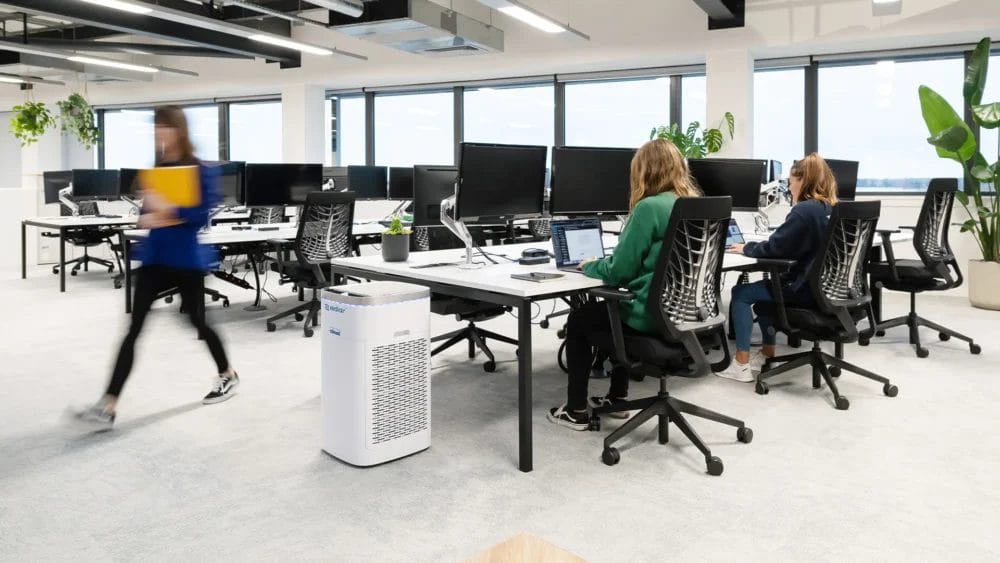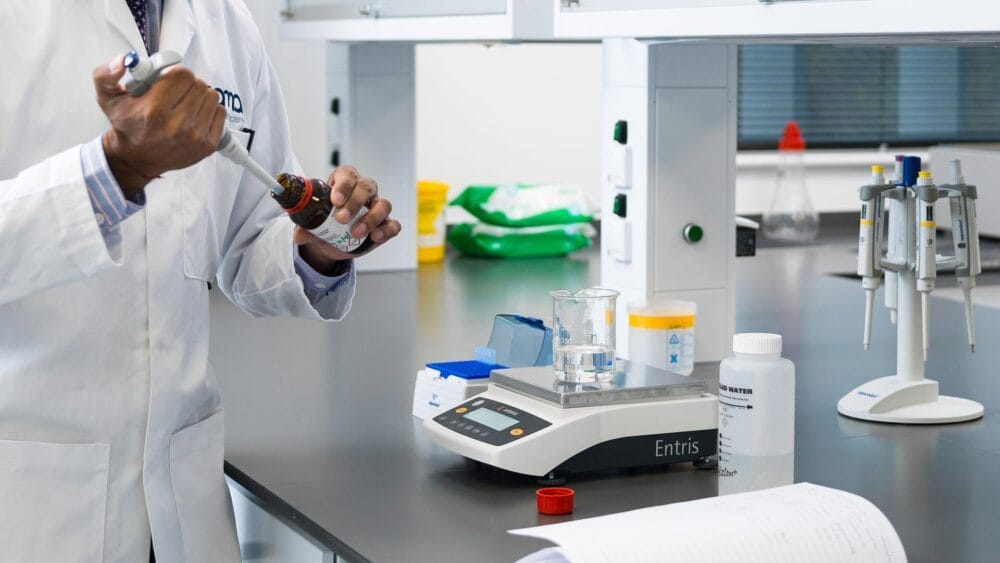Posted
14th April 2022
Research
In today’s article, we discuss Dr. Evonne Curran’s review of the change in understanding of transmission routes for SARS-CoV-2 and how a new focus on ventilation will help keep infectious diseases out of offices.
A recent review article by Dr Evonne Curran explores how the change in understanding of transmission routes for SARS-CoV-2 from predominantly droplet to predominantly airborne influences prevention measures in office spaces. Most importantly, there needs to be more focus on how ventilation in existing office spaces can be improved, and how better ventilation systems can be designed for new office buildings. Along with other measures to prevent the spread of transmissible diseases in offices, a new focus on ventilation will help keep infectious diseases out of office spaces, which benefits employees and employers.
Prevention measures can reduce spread of infections in offices
Studies have shown that prevention measures help to reduce the spread of infectious diseases in office settings. For example, hygiene interventions can reduce the spread of gastrointestinal and respiratory infections in office workers. However, previous studies have not explored the possible role of inadequate ventilation in the spread of infectious diseases such as COVID-19.
RELATED ARTICLE: How hand & surface hygiene can help keep your office safe
How views on SARS-CoV-2 transmission have changed
The review article by Dr Evonne Curran describes how views on transmission routes of the SARS-CoV-2 viruses have changed during the pandemic. At the beginning of the pandemic, transmission routes for SARS-CoV-2 were described as being either droplet or airborne, with airborne transmission considered less frequent. This has changed to being virus laden particles that can be inhaled and/or sprayed on facial mucous membranes, with airborne transmission being considered predominant.

Office spaces & the “3 Cs”
Office spaces are a place where the “3Cs” frequently occur:
1. Closed spaces
2. Close proximity
3. Crowded often
Inadequate prevention measures for respiratory viruses in this setting will result in widespread transmission, which will increase sickness and reduce productivity in the workforce.
What does the change in understanding mean for offices?
The most important shift is to think more about ventilation. In practice this will mean:
- Risk assessments undertaken in a new light for existing office spaces.
- Working with experts in ventilation to get the best out of existing air handling systems and strategies. This could include simple measures like opening windows more, or more complicated and expensive approaches like retrofitting or upgrading an air handling system.
- Considering the role of stand-alone air handling systems (like Rediair) in improving indoor air quality, especially where ventilation is known to be poor.
- Investing in optimised ventilation systems when it comes to designing new office buildings.

It’s not only about ventilation
Whilst ventilation may be the single most important measure to prevent the transmission of SARS-CoV-2 in office buildings, it’s not the only measure. There still needs to be a focus on hand, surface, and respiratory hygiene, which are also important drivers of SARS-CoV-2 transmission. Also, ventilation won’t do much to prevent the spread of infectious diseases that spread by contact, which includes most gastrointestinal diseases (like norovirus). This is why a focus on hand and surface hygiene is so important in office settings.
A package of measures, including optimised ventilation, are required to prevent the spread of infectious diseases such as SARS-CoV-2 in office spaces. No single measure is going to prevent the spread of all infectious diseases. But without adequate ventilation, it won’t be possible to prevent the spread of SARS-CoV-2 in offices.
If you’d like more information about GAMA’s latest innovation in ventilation, head to our Rediair page. Help spread the word about the importance of ventilation in offices by sharing this article on social.
SHARE THIS ARTICLE
Tags
Latest News
Introducing HEXI HUB: A seamless transition in our product line
We’re pleased to announce an update to our product offering…
Innovative solutions for tackling Carbapenemase-producing Enterobacteriaceae (CPE) at King’s College Hospitals
King’s College Hospital NHS Foundation Trust, one of London’s largest…
Gloves Off: reducing unnecessary plastic waste during environmental cleaning and disinfection
In this blog, Dr Phil Norville discusses the momentum-gaining ‘Gloves…
Gloves Off: Navigating SDS sheets and skin safety claims in environmental decontamination products
In this blog, James Clarke (Head of R&D, Science &…




